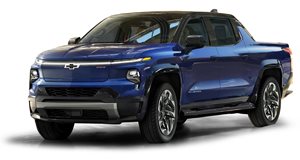- 1blackman1
- 08-09-2022, 02:18 PM
At least we agree on one thing. We all need a simpler tax code. I’m still in favor of a modified flat tax with a single deduction equal to the poverty line. But I’ll never get my way so we will be forever stuck with tax policy designed to shape behavior (and to benefit people like me who pay less than my secretary as a percentage of income). I’d also favor no FICA cutoff at 120 or whatever it is currently.
- nevergaveitathought
- 08-09-2022, 02:23 PM
this just coming in over the wire from algore one, a leased jet, on a transatlantic flight with algore and one masseuse as the only passengers, on a satellite relay, but dont worry he pays $432 monthly for a carbon offset
"It’s been a long time coming, but the Senate has finally advanced transformative climate legislation,” former Vice President Al Gore"
"It’s been a long time coming, but the Senate has finally advanced transformative climate legislation,” former Vice President Al Gore"
- dilbert firestorm
- 08-09-2022, 09:58 PM
There is a cap of like 70k for eligible cars. Rich folks buy cars more expensive than 70k!sure... only the upper middle can afford it.
So you now admit it favors the middle class...but you call those rich because they have more money than the poor? Wtf kind of logic is that.
The ev "offset"favors the middle class. Why can't you and Tiny just admit it? Originally Posted by WTF
not the lower middle and the middle middle.
- dilbert firestorm
- 08-10-2022, 12:57 AM
list of electric trucks: class of 2022

Bollinger B2 $125,000 Price (MSRP)

Ford F-150 Lightning $39,974 - $90,874 Price (MSRP)

Rivian R1T Truck $67,500 - $85,000 Price (MSRP)

GMC Hummer EV Pickup $108,700 Price (MSRP)
 2023
2023
GMC Sierra 1500 EV TBC Price (MSRP)

Lordstown Endurance $60,375 Price (MSRP)
 Late 2022
Late 2022
Tesla Cybertruck $39,900 - $69,900 Price (MSRP)
 2023
2023
Chevrolet Silverado 1500 EV $39,900 - $105,000 Price (MSRP)
 2024
2024
Ram 1500 EV TBC Price (MSRP)

Bollinger B2 $125,000 Price (MSRP)

Ford F-150 Lightning $39,974 - $90,874 Price (MSRP)

Rivian R1T Truck $67,500 - $85,000 Price (MSRP)

GMC Hummer EV Pickup $108,700 Price (MSRP)
 2023
2023GMC Sierra 1500 EV TBC Price (MSRP)

Lordstown Endurance $60,375 Price (MSRP)
 Late 2022
Late 2022Tesla Cybertruck $39,900 - $69,900 Price (MSRP)
 2023
2023Chevrolet Silverado 1500 EV $39,900 - $105,000 Price (MSRP)
 2024
2024Ram 1500 EV TBC Price (MSRP)
- Texas Contrarian
- 08-10-2022, 05:06 PM
From the standpoint of broad-based affordability, electric cars are still far from ready for prime time. Although battery costs have come down a lot in recent years, the all-in cost of the vehicle is still too high and the capability too limited for EVs to appeal to lower-income families.
Sure, some of the listed prices, even for Teslas, don't seem all that high. But EV manufacturers, at least for now, need to sell mostly upper-trim models to make the numbers work. (Adding $3-5K to their costs of nicer leather, fancier visible parts, etc. in order to tack $10-15K or so onto the final sales price.) Thus, they do all they can to restrain supply of lower-trim, stripped-down vehicles so they can push customers into the higher-margin products.
However, if you're considering this for a home in the city, it's a long way from being worth it from a strictly financial standpoint, primarily due to the battery costs. Although it's getting pretty cheap to generate power with solar panels these days, it's still very expensive to store it.
Another problem facing the EV industry is that managers will have a hard time scoring enough supply of lithium and other key elements to even handle future production if it remains on its current trajectory, let alone if it's ramped up to the extent envisioned by climate warriors.
The FT published a short piece on this issue just a couple of days ago:
https://www.ft.com/content/7ca99f9f-...c-477b6b12764e
Sure, some of the listed prices, even for Teslas, don't seem all that high. But EV manufacturers, at least for now, need to sell mostly upper-trim models to make the numbers work. (Adding $3-5K to their costs of nicer leather, fancier visible parts, etc. in order to tack $10-15K or so onto the final sales price.) Thus, they do all they can to restrain supply of lower-trim, stripped-down vehicles so they can push customers into the higher-margin products.
Has anyone here considered the added power generation capabilities needed to charge these EVs? From what I've seen it takes around 400 kWh to operate an average EV per month. California is having rolling brown-outs now. What will happen as more and more folks are plugging in?Additional power generation capacity isn't needed if owners follow the recommended practice of setting the charging time for, say, midnight to 4:00 AM, when there's comparatively little demand on the grid. The utilities' capacity challenges relate to peak demand, not total power consumption.
At current energy price levels that's somewhere around $100 per month, which isn't bad really. But it bears asking the question, are energy prices going up or down? Originally Posted by Ducbutter
I have been looking at solar panels and battery's. From a purely economic standpoint, they are getting close to making sense.I'm looking into the feasibility of a panel/battery/inverter off-grid system for a proposed house that's a long way from utility power lines. The idea looks like it would make sense for me, since otherwise I would have to pay tens of thousands of dollars to the utility co-op for installation the poles and lines. It's also appealing to never have to worry about storm blackouts (more common in rural areas), not to mention electric bills.
35-40k investment to eliminate both your heating/ac costs and your fuel.
I'm really waiting for the ev trucks to come out. Originally Posted by WTF
However, if you're considering this for a home in the city, it's a long way from being worth it from a strictly financial standpoint, primarily due to the battery costs. Although it's getting pretty cheap to generate power with solar panels these days, it's still very expensive to store it.
Another problem facing the EV industry is that managers will have a hard time scoring enough supply of lithium and other key elements to even handle future production if it remains on its current trajectory, let alone if it's ramped up to the extent envisioned by climate warriors.
The FT published a short piece on this issue just a couple of days ago:
https://www.ft.com/content/7ca99f9f-...c-477b6b12764e
- Texas Contrarian
- 08-10-2022, 05:08 PM
Unlike the WSJ, it's probable that some here don't subscribe to the FT, and it's paywalled -- so here's the article linked in the previous post:
Carmakers face fierce battle for lithium until 2030, warns top producer
Harry Dempsey
4-5 minutes
US company Albemarle says market will remain tight for the next seven to eight years
There has been a more than eightfold surge in the price of lithium compounds since the start of 2020 © Cristobal Olivares/Bloomberg
Carmakers face a battle for the rest of the decade to secure the lithium needed to help power the electric vehicle revolution, as demand threatens to overwhelm supply, one of the biggest producers of the metal has warned.
Lithium’s use in electric car batteries has put the raw material at the heart of a global competition that has pitted the world’s largest carmakers against each other and drawn in governments as they all race to increase and safeguard supply.
This year carmakers ranging from Stellantis to BMW have invested in lithium start-ups, underlining the pressure the industry faces as more of the world shifts to electric vehicles. Last week, General Motors said it would pay Livent, another producer, $200mn upfront to secure the raw material.
Kent Masters, chief executive of Albemarle, the largest publicly traded lithium producer, said the market will remain tight despite efforts to unlock more of the metal.
“It’s systemic for a pretty long period of time,” Masters said of the challenge facing the industry. “For seven to eight years it stays pretty tight.”
The forecast from Albemarle, which is based in Charlotte, North Carolina, and counts Tesla and other major carmakers as customers, comes after a more than eightfold surge in the price of lithium compounds since the start of 2020.
While the price has steadied near the record $70,000 per tonne hit in April, lithium’s use in batteries has allowed it to escape the recession-driven decline that has hit many other commodities in recent months.
Riding the hot market, Albemarle has lifted its earnings forecast three times this year, expects to be able to increase its production and turn cash flow positive faster than expected.
Some banks and research houses, however, are less optimistic about the prospect for lithium prices, with analysts at Goldman Sachs pointing to technological advances that could yield more supply within a couple of years.
A key material in electric batteries alongside nickel and cobalt, lithium can be extracted from brine, hard rock and clay. One technology some are betting on is direct lithium extraction, a technique that removes the metal from brine without relying on evaporation.
But Eric Norris, president of lithium at Albemarle, said hopes for a rush of supply overestimated the ability of producers to match demand from carmakers that has become “broader, deeper and more certain”.
“The ability to execute capital projects is not widely held,” said Norris, adding that lithium companies have historically delivered as much as 25 per cent less production than promised in a given year because of chronic delays and technical mishaps.
Lithium mining projects typically take between six and 19 years from an initial feasibility study to actual production, the longest of any of the technologies involved in electric batteries, according to a report last month from the International Energy Agency.
The world needs another 60 lithium mines by 2030 to meet all the decarbonisation and electric vehicle plans of national governments, the IEA said.
A dearth of semiconductor chips has been the major constraint for car companies over the past 18 months, but as they step up their EV ambitions, securing lithium is becoming an increasing worry.
“There’s a serious challenge with lithium availability,” said Chris Berry, founder of House Mountain Partners, a battery metals advisory. “That $70,000 [per tonne] number is sticky.”
Carmakers face fierce battle for lithium until 2030, warns top producer
Harry Dempsey
4-5 minutes
US company Albemarle says market will remain tight for the next seven to eight years
There has been a more than eightfold surge in the price of lithium compounds since the start of 2020 © Cristobal Olivares/Bloomberg
Carmakers face a battle for the rest of the decade to secure the lithium needed to help power the electric vehicle revolution, as demand threatens to overwhelm supply, one of the biggest producers of the metal has warned.
Lithium’s use in electric car batteries has put the raw material at the heart of a global competition that has pitted the world’s largest carmakers against each other and drawn in governments as they all race to increase and safeguard supply.
This year carmakers ranging from Stellantis to BMW have invested in lithium start-ups, underlining the pressure the industry faces as more of the world shifts to electric vehicles. Last week, General Motors said it would pay Livent, another producer, $200mn upfront to secure the raw material.
Kent Masters, chief executive of Albemarle, the largest publicly traded lithium producer, said the market will remain tight despite efforts to unlock more of the metal.
“It’s systemic for a pretty long period of time,” Masters said of the challenge facing the industry. “For seven to eight years it stays pretty tight.”
The forecast from Albemarle, which is based in Charlotte, North Carolina, and counts Tesla and other major carmakers as customers, comes after a more than eightfold surge in the price of lithium compounds since the start of 2020.
While the price has steadied near the record $70,000 per tonne hit in April, lithium’s use in batteries has allowed it to escape the recession-driven decline that has hit many other commodities in recent months.
Riding the hot market, Albemarle has lifted its earnings forecast three times this year, expects to be able to increase its production and turn cash flow positive faster than expected.
Some banks and research houses, however, are less optimistic about the prospect for lithium prices, with analysts at Goldman Sachs pointing to technological advances that could yield more supply within a couple of years.
A key material in electric batteries alongside nickel and cobalt, lithium can be extracted from brine, hard rock and clay. One technology some are betting on is direct lithium extraction, a technique that removes the metal from brine without relying on evaporation.
But Eric Norris, president of lithium at Albemarle, said hopes for a rush of supply overestimated the ability of producers to match demand from carmakers that has become “broader, deeper and more certain”.
“The ability to execute capital projects is not widely held,” said Norris, adding that lithium companies have historically delivered as much as 25 per cent less production than promised in a given year because of chronic delays and technical mishaps.
Lithium mining projects typically take between six and 19 years from an initial feasibility study to actual production, the longest of any of the technologies involved in electric batteries, according to a report last month from the International Energy Agency.
The world needs another 60 lithium mines by 2030 to meet all the decarbonisation and electric vehicle plans of national governments, the IEA said.
A dearth of semiconductor chips has been the major constraint for car companies over the past 18 months, but as they step up their EV ambitions, securing lithium is becoming an increasing worry.
“There’s a serious challenge with lithium availability,” said Chris Berry, founder of House Mountain Partners, a battery metals advisory. “That $70,000 [per tonne] number is sticky.”
- WTF
- 08-10-2022, 06:20 PM
GM's lineup includes a 27k model. While hardly any car manufacturers cater to the poor other than maybe Tata in India....27k is not for the wealthy
https://www.forbes.com/sites/edgarst...n-as-q2-falls/
letter to shareholders sent in conjunction with the automakers second quarter financial results, GM chair and CEO Mary Barra wrote, “GM has also done something unique in the industry to help secure our future EV production. We have binding agreements securing all battery raw material to support our plan for 1 million units of annual EV capacity in North America in 2025. These are commitments with strategic partners for key materials like lithium, cobalt and nickel. This includes new multi-year agreements announced today by Livent Corp., for lithium, and LG Chem, for cathode material.”
Specifically, the agreements are:
LG Chem plans to provide GM more than 9
The conditional commitment to the loan comes through the Advanced Technology Vehicles Manufacturing program which supports U.S. production of vehicles, components and other materials that improve fuel economy.
“While this conditional commitment demonstrates the Department’s intent to finance the project, several steps remain, and certain conditions must be satisfied before the Department issues a final loan,” wrote Jigar Shah, Director of the Loan Programs Office in a DOE blog post on Monday.
The positive news regarding GM's march into its electric future came as the automaker released negative numbers on its second quarter financial performance.
For the three months ending June 30, net income came in at $1.7 billion, down from $2.8 billion during Q2 in 2021. That, despite revenues of $35.7 billion during the quarter, an increase of $1.6 billion over Q2 2021 revenues of $34.1 billion.
In her letter to shareholders, Barra blamed the decline in the bottom line to “impacts of the supply chain disruptions we experienced, especially in June.”
Barra said demand for GM vehicles remains high, but there just aren't very many cars or trucks from which to choose.
The company said inventory on GM dealer lots is only a 10-15 day supply compared with an optimal inventory of about 60 days.
Barra said the company is already making moves to protect itself against further downturns or challenges, telling analysts, “While demand remains strong there are growing concerns about the economy to be sure, that's why we're already taking proactive steps to manage costs and cash flows including reducing some discretionary spending and limiting hiring to critical needs and positions that support growth.”
However, Barra said the company is sticking with positive projections for now, telling shareholders in her letter, “Our outlook for the second half is strong, and we are reaffirming our full-year earnings guidance that includes EBIT-adjusted of between $13 billion and $15 billion. This confidence comes from our expectation that GM global production and wholesale deliveries will be up sharply in the second half.”
Follow me on Twitter.
Ed Garsten
Follow
I’ve been covering the auto industry since 1989, first as CNN Detroit Bureau Chief,... Read More
Editorial Standards
Corrections
Reprints & Permissions
LEADERSHIP
3 Ways To Tackle Hiring’s Mammoth Bias Problem
Laura Thompson
Brand Contributor
Grads of Life
BRANDVOICE| Paid Program
Krysta Sadowski
Brand Contributor
Grads of Life
BRANDVOICE| Paid Program
Jun 30, 2022,12:12pm EDT
The shift toward skills-based hiring is part and parcel of improving racial equity in the workplace, but even the most well-intentioned hiring initiatives can fall flat if bias is not addressed.
Getty GETTY
The skills-based hiring movement is growing. A Burning Glass Institute analysis of more than 51 million job posts found that employers removed degree requirements for nearly half of middle-skills roles and more than one-third of high-skills roles between 2017 and 2019. And federal, state and private sector employers appear poised to accelerate this trend. This shift is partly driven by the call for improved diversity, equity and inclusion (DEI) outcomes in the workforce and the recognition of skills-based hiring as a conduit for advancing racial and economic equity.
But as companies work to make this shift, we’re noticing a risk: Skills-based hiring efforts could fall flat if HR teams do not also invest in addressing the ways in which bias can impact hiring processes.
Skills-based hiring focuses primarily on reducing pedigree bias — the common tendency to prefer candidates who have a four-year degree or B.A. equivalent even when one is not necessary to be successful in the job. But there are other kinds of insidious bias that creep into hiring and can prevent businesses from maximizing DEI goals.
So, how can we transform talent processes to counter all forms of bias, center equity and ensure skills-based practices thrive?
1. Develop a shared internal understanding of common biases and how they can show up in hiring.
The first step in addressing bias is accepting and acknowledging that it exists. It may also help teams to understand that bias is not inherently negative and serves an evolutionary purpose. Cognitive shortcuts help us parse millions of bits of information, identify patterns and streamline our decision-making.
However, these shortcuts become harmful when they influence how we assess and interact with groups of people. In the labor market, bias toward white candidates has led to occupational segregation and disparate outcomes in upward mobility.
To secure economic opportunity and mobility for all, we must raise awareness of the many biases behind our decision-making. Beyond pedigree bias, affinity bias and the halo/horn effect are the blockers we see most often in recruitment.
Affinity bias refers to the tendency of interviewers to gravitate toward, and more favorably rate, candidates with similar backgrounds, interests, personalities or work styles to the team and themselves. Statements such as “They would fit right in” or “They have a lot of similarities with the team” may be indicators that affinity bias is at play.
The halo/horn effect describes the tendency for hiring teams to allow one positive or negative trait to sway their first impression and overall ratings. This might look like placing an exaggerated emphasis on a particular response or experience from a candidate, whether positive or negative.
In our training sessions with companies, we find that simply surfacing and calling attention to different kinds of biases and engaging in honest reflection and discussion can have a significant influence on individual and team behavior.
2. Update your practices and policies at each step of the hiring process.
Once teams have a shared understanding of the most prevalent biases, focus on redesigning systems to bring more objectivity and equity at every stage of hiring. Guiding questions to consider might include:
Do we conduct blind resume reviews? Removing candidate names, addresses, and the names of higher education institutions listed on resumes can limit the impacts of pedigree, affinity, gender and racial bias on the screening process. This can be done manually or with the help of various tech tools. Several employers are already anonymizing candidate applications, including HSBC, Deloitte and BBC.
Do we use standardized interview processes, questions and evaluation criteria for all candidates in a given search? Keeping the interview format consistent will allow you to objectively evaluate candidates’ skills as opposed to relying on proxies, such as their alma mater, previous company or internal referrals. A standardized scoring template can also help hiring teams avoid hiring based on “culture fit” or “good feelings” about candidates, which are all too often code for affinity bias.
Do we engage diverse hiring panels to make decisions on candidates? Doing so can help uncover hidden biases, add rigor to the evaluation process, and provide greater insight into candidates’ backgrounds.
Though not a comprehensive list, each of the above practices has evidence of reducing bias and increasing the likelihood of hiring historically excluded talent.
3. Provide training and design accountability structures for everyone involved in hiring.
It is not enough to institute a new policy or practice — companies must consistently support the people who will be implementing those practices day to day. This includes both training for hiring managers on new approaches, such as standardized interviewing, and accountability mechanisms to support implementation, such as integrating DEI hiring outcomes into performance reviews. Companies who are most successful at both skills-based hiring and mitigating bias are diligent about communicating with and training their people to understand the value of these strategies and their role in enacting change.
Without thoughtful examination of how bias can subvert every step of the hiring process, efforts to take a skills-first approach run the risk of leaving DEI outcomes exactly as they were before. If diverse representation and equity are a key priority, companies must mitigate the many kinds of bias that we all have when making hiring decisions.
What’s more, bias mitigation protocols should not be limited to the hiring stage. They should be embraced as part of a broader strategy, to bolster DEI and support workers at every phase of the talent journey. That strategy will look different for every employer, but understanding your DEI growth areas can help shape and advance it.
Laura Thompson
Laura leads strategic initiatives for Grads of Life, with a focus on building and... Read More
Krysta Sadowski
Krysta Sadowski currently serves as a Director with Grads of Life’s Advisory Services... Read More
Editorial Standards
Corrections
Reprints & Permissions
https://www.forbes.com/sites/edgarst...n-as-q2-falls/
letter to shareholders sent in conjunction with the automakers second quarter financial results, GM chair and CEO Mary Barra wrote, “GM has also done something unique in the industry to help secure our future EV production. We have binding agreements securing all battery raw material to support our plan for 1 million units of annual EV capacity in North America in 2025. These are commitments with strategic partners for key materials like lithium, cobalt and nickel. This includes new multi-year agreements announced today by Livent Corp., for lithium, and LG Chem, for cathode material.”
Specifically, the agreements are:
LG Chem plans to provide GM more than 9
The conditional commitment to the loan comes through the Advanced Technology Vehicles Manufacturing program which supports U.S. production of vehicles, components and other materials that improve fuel economy.
“While this conditional commitment demonstrates the Department’s intent to finance the project, several steps remain, and certain conditions must be satisfied before the Department issues a final loan,” wrote Jigar Shah, Director of the Loan Programs Office in a DOE blog post on Monday.
The positive news regarding GM's march into its electric future came as the automaker released negative numbers on its second quarter financial performance.
For the three months ending June 30, net income came in at $1.7 billion, down from $2.8 billion during Q2 in 2021. That, despite revenues of $35.7 billion during the quarter, an increase of $1.6 billion over Q2 2021 revenues of $34.1 billion.
In her letter to shareholders, Barra blamed the decline in the bottom line to “impacts of the supply chain disruptions we experienced, especially in June.”
Barra said demand for GM vehicles remains high, but there just aren't very many cars or trucks from which to choose.
The company said inventory on GM dealer lots is only a 10-15 day supply compared with an optimal inventory of about 60 days.
Barra said the company is already making moves to protect itself against further downturns or challenges, telling analysts, “While demand remains strong there are growing concerns about the economy to be sure, that's why we're already taking proactive steps to manage costs and cash flows including reducing some discretionary spending and limiting hiring to critical needs and positions that support growth.”
However, Barra said the company is sticking with positive projections for now, telling shareholders in her letter, “Our outlook for the second half is strong, and we are reaffirming our full-year earnings guidance that includes EBIT-adjusted of between $13 billion and $15 billion. This confidence comes from our expectation that GM global production and wholesale deliveries will be up sharply in the second half.”
Follow me on Twitter.
Ed Garsten
Follow
I’ve been covering the auto industry since 1989, first as CNN Detroit Bureau Chief,... Read More
Editorial Standards
Corrections
Reprints & Permissions
LEADERSHIP
3 Ways To Tackle Hiring’s Mammoth Bias Problem
Laura Thompson
Brand Contributor
Grads of Life
BRANDVOICE| Paid Program
Krysta Sadowski
Brand Contributor
Grads of Life
BRANDVOICE| Paid Program
Jun 30, 2022,12:12pm EDT
The shift toward skills-based hiring is part and parcel of improving racial equity in the workplace, but even the most well-intentioned hiring initiatives can fall flat if bias is not addressed.
Getty GETTY
The skills-based hiring movement is growing. A Burning Glass Institute analysis of more than 51 million job posts found that employers removed degree requirements for nearly half of middle-skills roles and more than one-third of high-skills roles between 2017 and 2019. And federal, state and private sector employers appear poised to accelerate this trend. This shift is partly driven by the call for improved diversity, equity and inclusion (DEI) outcomes in the workforce and the recognition of skills-based hiring as a conduit for advancing racial and economic equity.
But as companies work to make this shift, we’re noticing a risk: Skills-based hiring efforts could fall flat if HR teams do not also invest in addressing the ways in which bias can impact hiring processes.
Skills-based hiring focuses primarily on reducing pedigree bias — the common tendency to prefer candidates who have a four-year degree or B.A. equivalent even when one is not necessary to be successful in the job. But there are other kinds of insidious bias that creep into hiring and can prevent businesses from maximizing DEI goals.
So, how can we transform talent processes to counter all forms of bias, center equity and ensure skills-based practices thrive?
1. Develop a shared internal understanding of common biases and how they can show up in hiring.
The first step in addressing bias is accepting and acknowledging that it exists. It may also help teams to understand that bias is not inherently negative and serves an evolutionary purpose. Cognitive shortcuts help us parse millions of bits of information, identify patterns and streamline our decision-making.
However, these shortcuts become harmful when they influence how we assess and interact with groups of people. In the labor market, bias toward white candidates has led to occupational segregation and disparate outcomes in upward mobility.
To secure economic opportunity and mobility for all, we must raise awareness of the many biases behind our decision-making. Beyond pedigree bias, affinity bias and the halo/horn effect are the blockers we see most often in recruitment.
Affinity bias refers to the tendency of interviewers to gravitate toward, and more favorably rate, candidates with similar backgrounds, interests, personalities or work styles to the team and themselves. Statements such as “They would fit right in” or “They have a lot of similarities with the team” may be indicators that affinity bias is at play.
The halo/horn effect describes the tendency for hiring teams to allow one positive or negative trait to sway their first impression and overall ratings. This might look like placing an exaggerated emphasis on a particular response or experience from a candidate, whether positive or negative.
In our training sessions with companies, we find that simply surfacing and calling attention to different kinds of biases and engaging in honest reflection and discussion can have a significant influence on individual and team behavior.
2. Update your practices and policies at each step of the hiring process.
Once teams have a shared understanding of the most prevalent biases, focus on redesigning systems to bring more objectivity and equity at every stage of hiring. Guiding questions to consider might include:
Do we conduct blind resume reviews? Removing candidate names, addresses, and the names of higher education institutions listed on resumes can limit the impacts of pedigree, affinity, gender and racial bias on the screening process. This can be done manually or with the help of various tech tools. Several employers are already anonymizing candidate applications, including HSBC, Deloitte and BBC.
Do we use standardized interview processes, questions and evaluation criteria for all candidates in a given search? Keeping the interview format consistent will allow you to objectively evaluate candidates’ skills as opposed to relying on proxies, such as their alma mater, previous company or internal referrals. A standardized scoring template can also help hiring teams avoid hiring based on “culture fit” or “good feelings” about candidates, which are all too often code for affinity bias.
Do we engage diverse hiring panels to make decisions on candidates? Doing so can help uncover hidden biases, add rigor to the evaluation process, and provide greater insight into candidates’ backgrounds.
Though not a comprehensive list, each of the above practices has evidence of reducing bias and increasing the likelihood of hiring historically excluded talent.
3. Provide training and design accountability structures for everyone involved in hiring.
It is not enough to institute a new policy or practice — companies must consistently support the people who will be implementing those practices day to day. This includes both training for hiring managers on new approaches, such as standardized interviewing, and accountability mechanisms to support implementation, such as integrating DEI hiring outcomes into performance reviews. Companies who are most successful at both skills-based hiring and mitigating bias are diligent about communicating with and training their people to understand the value of these strategies and their role in enacting change.
Without thoughtful examination of how bias can subvert every step of the hiring process, efforts to take a skills-first approach run the risk of leaving DEI outcomes exactly as they were before. If diverse representation and equity are a key priority, companies must mitigate the many kinds of bias that we all have when making hiring decisions.
What’s more, bias mitigation protocols should not be limited to the hiring stage. They should be embraced as part of a broader strategy, to bolster DEI and support workers at every phase of the talent journey. That strategy will look different for every employer, but understanding your DEI growth areas can help shape and advance it.
Laura Thompson
Laura leads strategic initiatives for Grads of Life, with a focus on building and... Read More
Krysta Sadowski
Krysta Sadowski currently serves as a Director with Grads of Life’s Advisory Services... Read More
Editorial Standards
Corrections
Reprints & Permissions
- Jacuzzme
- 08-10-2022, 07:33 PM
Once again. What are the poor peoples vehicles. Originally Posted by 1blackman1Used beaters for $1200. I drove them well into adulthood. My Mrs still drives a piece of shit 2000 prius back and forth to work, and she’s a doctor with an obscene salary.
And middle class peoples vehicles.A bit better used car, in the 5-10k range. This is what I drive daily and buy for the kids, on the lower price end for boys because fixing your own car is a skill all boys should have.
You didn’t answer the question.There ya go. I’ve got nothing against having nice cars, I’ve got several, but have never made a car payment in my life. It’s cash money or gtfo because cars that you actually drive (in a sane market) are an incredibly shitty investment.
- Jacuzzme
- 08-10-2022, 07:37 PM
GM's lineup includes a 27k model. While hardly any car manufacturers cater to the poor other than maybe Tata in India....27k is not for the wealthyReally? You’ve got some poor friends with 27 grand to spare? Why the fuck would a broke person drop $27k on a car when they could get something perfectly drivable and inspectable on Craigslist for 5?
- Ducbutter
- 08-10-2022, 09:43 PM
You are absolutely correct depending on the size of the if in that first sentence quoted. I'm not as convinced as you but I've missed the mark before. These folks see it differently, no?
Additional power generation capacity isn't needed if owners follow the recommended practice of setting the charging time for, say, midnight to 4:00 AM, when there's comparatively little demand on the grid. The utilities' capacity challenges relate to peak demand, not total power consumption.
Originally Posted by Texas Contrarian
https://www.statista.com/statistics/...nited%20States.
I couldn't agree more about the lithium issue.
I simply don't see EVs as some sort of panacea.
- dilbert firestorm
- 08-11-2022, 12:26 AM
GM's lineup includes a 27k model. While hardly any car manufacturers cater to the poor other than maybe Tata in India....27k is not for the wealthywtf, you could have cut out the bias article as it didn't pertain to this thread.
https://www.forbes.com/sites/edgarst...n-as-q2-falls/
letter to shareholders sent in conjunction with the automakers second quarter financial results, GM chair and CEO Mary Barra wrote, “GM has also done something unique in the industry to help secure our future EV production. We have binding agreements securing all battery raw material to support our plan for 1 million units of annual EV capacity in North America in 2025. These are commitments with strategic partners for key materials like lithium, cobalt and nickel. This includes new multi-year agreements announced today by Livent Corp., for lithium, and LG Chem, for cathode material.”
Specifically, the agreements are:
LG Chem plans to provide GM more than 9
The conditional commitment to the loan comes through the Advanced Technology Vehicles Manufacturing program which supports U.S. production of vehicles, components and other materials that improve fuel economy.
“While this conditional commitment demonstrates the Department’s intent to finance the project, several steps remain, and certain conditions must be satisfied before the Department issues a final loan,” wrote Jigar Shah, Director of the Loan Programs Office in a DOE blog post on Monday.
The positive news regarding GM's march into its electric future came as the automaker released negative numbers on its second quarter financial performance.
For the three months ending June 30, net income came in at $1.7 billion, down from $2.8 billion during Q2 in 2021. That, despite revenues of $35.7 billion during the quarter, an increase of $1.6 billion over Q2 2021 revenues of $34.1 billion.
In her letter to shareholders, Barra blamed the decline in the bottom line to “impacts of the supply chain disruptions we experienced, especially in June.”
Barra said demand for GM vehicles remains high, but there just aren't very many cars or trucks from which to choose.
The company said inventory on GM dealer lots is only a 10-15 day supply compared with an optimal inventory of about 60 days.
Barra said the company is already making moves to protect itself against further downturns or challenges, telling analysts, “While demand remains strong there are growing concerns about the economy to be sure, that's why we're already taking proactive steps to manage costs and cash flows including reducing some discretionary spending and limiting hiring to critical needs and positions that support growth.”
However, Barra said the company is sticking with positive projections for now, telling shareholders in her letter, “Our outlook for the second half is strong, and we are reaffirming our full-year earnings guidance that includes EBIT-adjusted of between $13 billion and $15 billion. This confidence comes from our expectation that GM global production and wholesale deliveries will be up sharply in the second half.”
Follow me on Twitter.
Ed Garsten
Follow
I’ve been covering the auto industry since 1989, first as CNN Detroit Bureau Chief,... Read More
Editorial Standards
Corrections
Reprints & Permissions
LEADERSHIP
3 Ways To Tackle Hiring’s Mammoth Bias Problem
Laura Thompson
Brand Contributor
Grads of Life
BRANDVOICE| Paid Program
Krysta Sadowski
Brand Contributor
Grads of Life
BRANDVOICE| Paid Program
Jun 30, 2022,12:12pm EDT
The shift toward skills-based hiring is part and parcel of improving racial equity in the workplace, but even the most well-intentioned hiring initiatives can fall flat if bias is not addressed.
Getty GETTY
The skills-based hiring movement is growing. A Burning Glass Institute analysis of more than 51 million job posts found that employers removed degree requirements for nearly half of middle-skills roles and more than one-third of high-skills roles between 2017 and 2019. And federal, state and private sector employers appear poised to accelerate this trend. This shift is partly driven by the call for improved diversity, equity and inclusion (DEI) outcomes in the workforce and the recognition of skills-based hiring as a conduit for advancing racial and economic equity.
But as companies work to make this shift, we’re noticing a risk: Skills-based hiring efforts could fall flat if HR teams do not also invest in addressing the ways in which bias can impact hiring processes.
Skills-based hiring focuses primarily on reducing pedigree bias — the common tendency to prefer candidates who have a four-year degree or B.A. equivalent even when one is not necessary to be successful in the job. But there are other kinds of insidious bias that creep into hiring and can prevent businesses from maximizing DEI goals.
So, how can we transform talent processes to counter all forms of bias, center equity and ensure skills-based practices thrive?
1. Develop a shared internal understanding of common biases and how they can show up in hiring.
The first step in addressing bias is accepting and acknowledging that it exists. It may also help teams to understand that bias is not inherently negative and serves an evolutionary purpose. Cognitive shortcuts help us parse millions of bits of information, identify patterns and streamline our decision-making.
However, these shortcuts become harmful when they influence how we assess and interact with groups of people. In the labor market, bias toward white candidates has led to occupational segregation and disparate outcomes in upward mobility.
To secure economic opportunity and mobility for all, we must raise awareness of the many biases behind our decision-making. Beyond pedigree bias, affinity bias and the halo/horn effect are the blockers we see most often in recruitment.
Affinity bias refers to the tendency of interviewers to gravitate toward, and more favorably rate, candidates with similar backgrounds, interests, personalities or work styles to the team and themselves. Statements such as “They would fit right in” or “They have a lot of similarities with the team” may be indicators that affinity bias is at play.
The halo/horn effect describes the tendency for hiring teams to allow one positive or negative trait to sway their first impression and overall ratings. This might look like placing an exaggerated emphasis on a particular response or experience from a candidate, whether positive or negative.
In our training sessions with companies, we find that simply surfacing and calling attention to different kinds of biases and engaging in honest reflection and discussion can have a significant influence on individual and team behavior.
2. Update your practices and policies at each step of the hiring process.
Once teams have a shared understanding of the most prevalent biases, focus on redesigning systems to bring more objectivity and equity at every stage of hiring. Guiding questions to consider might include:
Do we conduct blind resume reviews? Removing candidate names, addresses, and the names of higher education institutions listed on resumes can limit the impacts of pedigree, affinity, gender and racial bias on the screening process. This can be done manually or with the help of various tech tools. Several employers are already anonymizing candidate applications, including HSBC, Deloitte and BBC.
Do we use standardized interview processes, questions and evaluation criteria for all candidates in a given search? Keeping the interview format consistent will allow you to objectively evaluate candidates’ skills as opposed to relying on proxies, such as their alma mater, previous company or internal referrals. A standardized scoring template can also help hiring teams avoid hiring based on “culture fit” or “good feelings” about candidates, which are all too often code for affinity bias.
Do we engage diverse hiring panels to make decisions on candidates? Doing so can help uncover hidden biases, add rigor to the evaluation process, and provide greater insight into candidates’ backgrounds.
Though not a comprehensive list, each of the above practices has evidence of reducing bias and increasing the likelihood of hiring historically excluded talent.
3. Provide training and design accountability structures for everyone involved in hiring.
It is not enough to institute a new policy or practice — companies must consistently support the people who will be implementing those practices day to day. This includes both training for hiring managers on new approaches, such as standardized interviewing, and accountability mechanisms to support implementation, such as integrating DEI hiring outcomes into performance reviews. Companies who are most successful at both skills-based hiring and mitigating bias are diligent about communicating with and training their people to understand the value of these strategies and their role in enacting change.
Without thoughtful examination of how bias can subvert every step of the hiring process, efforts to take a skills-first approach run the risk of leaving DEI outcomes exactly as they were before. If diverse representation and equity are a key priority, companies must mitigate the many kinds of bias that we all have when making hiring decisions.
What’s more, bias mitigation protocols should not be limited to the hiring stage. They should be embraced as part of a broader strategy, to bolster DEI and support workers at every phase of the talent journey. That strategy will look different for every employer, but understanding your DEI growth areas can help shape and advance it.
Laura Thompson
Laura leads strategic initiatives for Grads of Life, with a focus on building and... Read More
Krysta Sadowski
Krysta Sadowski currently serves as a Director with Grads of Life’s Advisory Services... Read More
Editorial Standards
Corrections
Reprints & Permissions Originally Posted by WTF
sheesh!
- dilbert firestorm
- 08-11-2022, 12:47 AM
From the standpoint of broad-based affordability, electric cars are still far from ready for prime time. Although battery costs have come down a lot in recent years, the all-in cost of the vehicle is still too high and the capability too limited for EVs to appeal to lower-income families. Originally Posted by Texas Contrarianthese EVs are not mature. they're essentially in the "model T" stage.
you have to realize how long it took for the model T ICE technology and its infrastructure to mature...
30 - 40 years to replace horses.
50 years to have gas stations in in all 48 states.
100+ years for engine technology to be fuel efficient.
- 1blackman1
- 08-12-2022, 08:35 AM
Used beaters for $1200. I drove them well into adulthood. My Mrs still drives a piece of shit 2000 prius back and forth to work, and she’s a doctor with an obscene salary. A bit better used car, in the 5-10k range. This is what I drive daily and buy for the kids, on the lower price end for boys because fixing your own car is a skill all boys should have. There ya go. I’ve got nothing against having nice cars, I’ve got several, but have never made a car payment in my life. It’s cash money or gtfo because cars that you actually drive (in a sane market) are an incredibly shitty investment. Originally Posted by JacuzzmeI applaud you. Though I doubt you’re the norm. No poor folks I know are driving 1200 beaters. They should but it’s generally not what happens. Unfortunately they get caught into usurious car note payments worsening their situation.
Most lower middle class people I know buynew cars in the 25K-35K range. Honda, Toyota, GM, Ford, and KIA or used BMW, Lexus, Mercedes etc. in a similar range. Whether they should or not is a different conversation. Nonetheless middle class people can afford EVs.
Folks like me are pretty exclusively luxury vehicles, but that’s a different issue.
- 1blackman1
- 08-12-2022, 08:39 AM
Bill should pass house today so Biden can sign next week. Hope he has a big signing ceremony and touts how anticipation for this legislation has cause inflation to begin to recede already and gas prices are the lowest in 5 months and still dropping and that 401Ks are getting back their losses and the stock market has rebounded. All due to democrats addressing real issues instead of fearmongering. This is what real work seeking results looks like rather than spending time on Twitter and political talk shows hoping for the failure of the US economy.
- nevergaveitathought
- 08-12-2022, 08:40 AM
i think its ford who announced a couple days ago their lightning price is going up up up, due to battery costs i believe